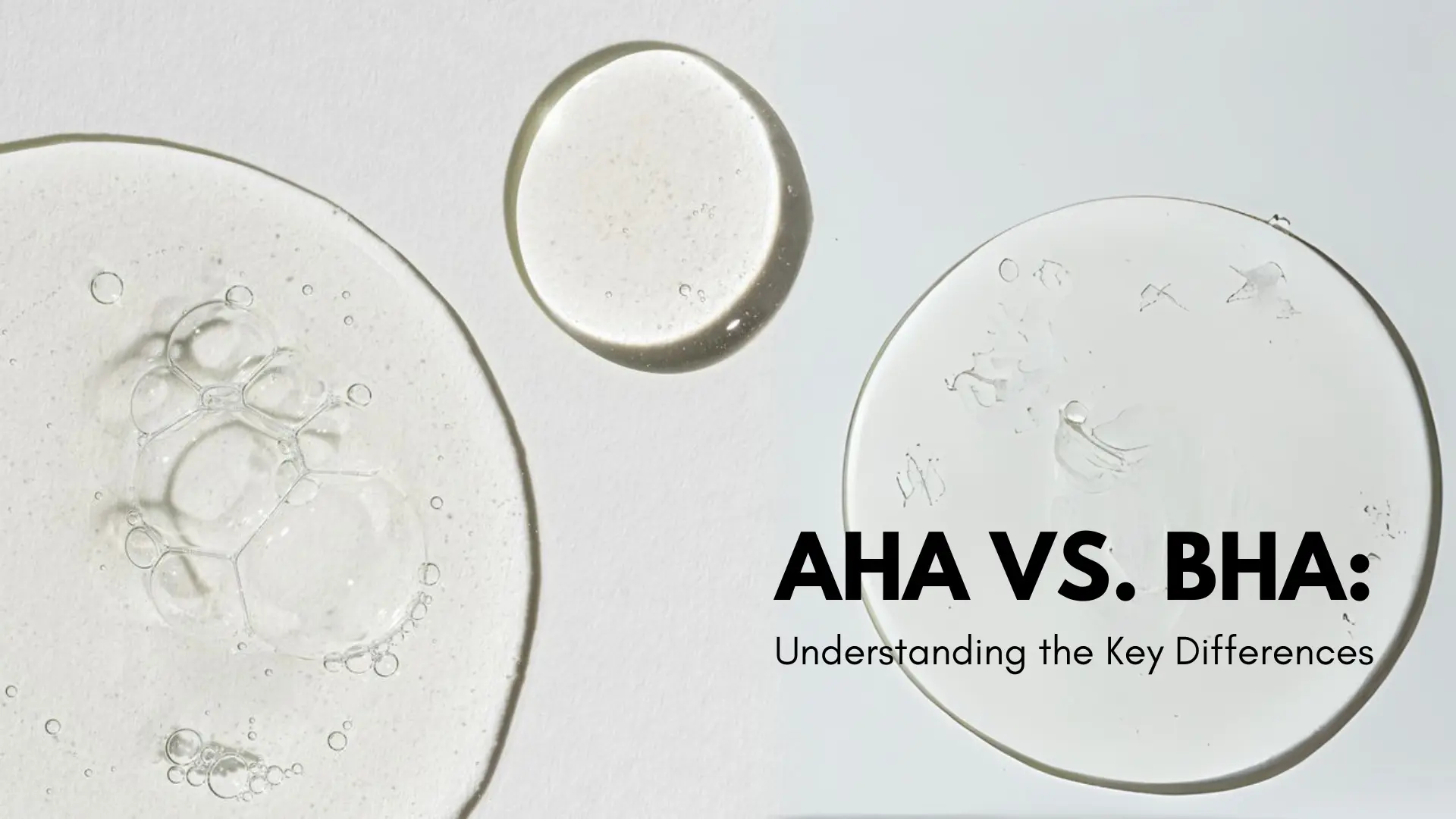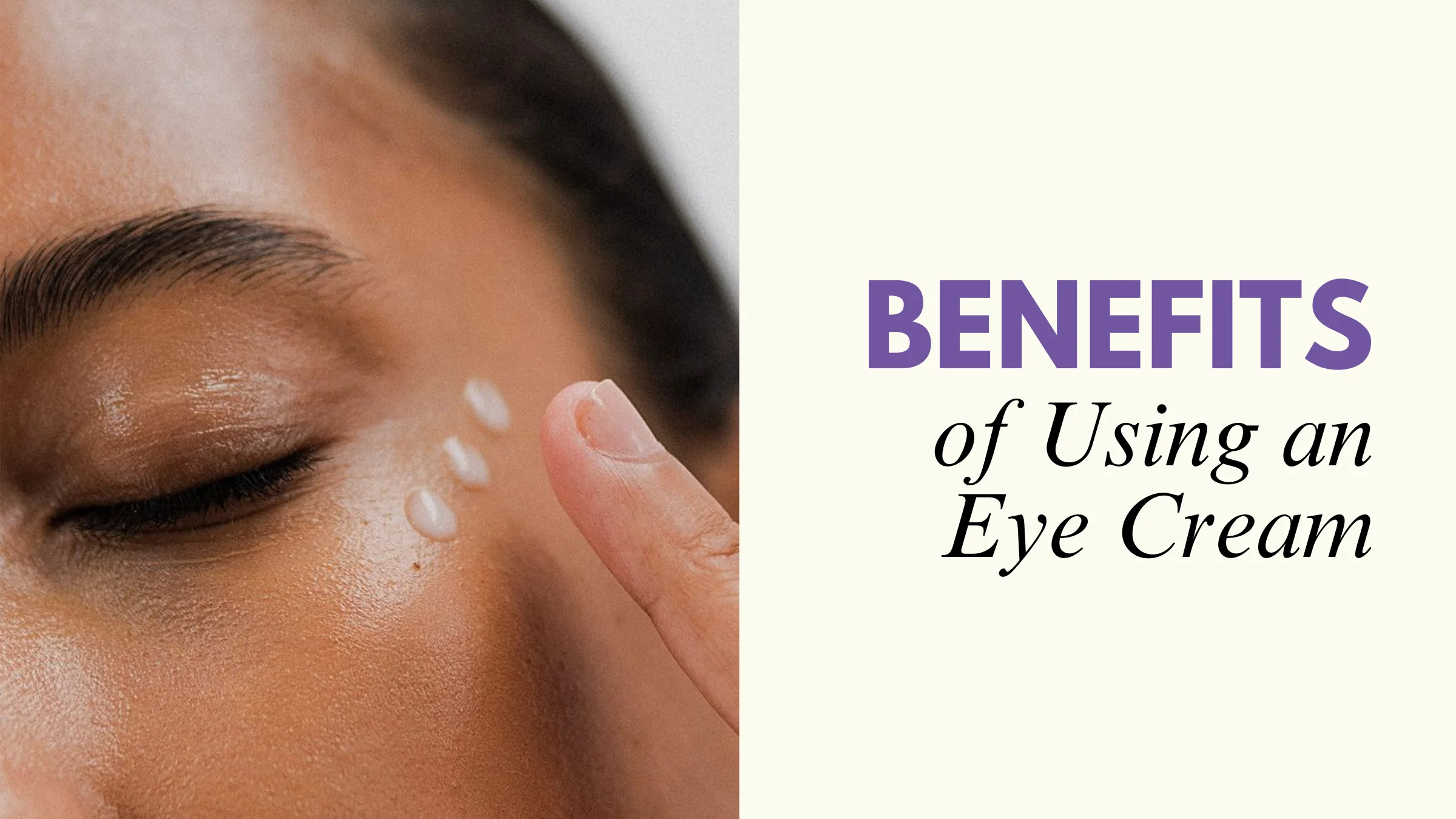Table of Contents
AHA vs. BHA: Understanding the Key Differences
What Are AHAs and How Do They Work?
Benefits of AHA for Skin
What Are BHAs and How Do They Work?
Benefits of BHA for Skin
Which One Is Right for Your Skin Type?
How to Use AHAs and BHAs Safely
Can You Use AHA and BHA Together?
Precautions and Possible Side Effects
AHA vs. BHA: Understanding the Key Differences
Chemical exfoliants are the game changers of the skin care routine we didn’t know we needed. They have revolutionized skin well-being by offering precise and targeted solutions for major skin concerns. At the frontline are two most popular and effective ingredients that stand out with their unique benefits– alpha hydroxy acids (AHAs) and beta hydroxy acids (BHAs). While both powerhouse ingredients are tailored to promote smoother, brighter, and radiant skin, choosing the best can be a daunting task. In this deep dive blog, we will decode the key differences in AHAs and BHAs and reveal their respective benefits, for you to make a wise choice.
| Features | AHA (Alpha Hydroxy Acid) | BHA (Beta Hydroxy Acid) |
|---|---|---|
| Solubility | Water‑soluble | Oil‑soluble |
| Primary Action | Exfoliates surface dead skin cells | Exfoliates inside pores |
| Ideal For | Dry, sun‑damaged, dull skin | Oily, acne‑prone, congested skin |
| Common Types | Glycolic, lactic, mandelic acids | Salicylic acid |
| Irritation Risk | Higher—especially for sensitive skin | Lower—more gentle on surface |
| Moisture Impact | Can increase hydration (esp. lactic acid) | Can cause dryness if overused |
What Are AHAs?
Alpha hydroxy acids (AHAs) are water‑soluble acids derived from natural sources like fruits, milk, and sugar cane. The most popular AHAs that you will find in skincare products include:
- Glycolic Acid (from sugar cane)
- Mandelic Acid (from bitter almonds)
- Lactic Acid (from milk or fermentation)
How do AHAs Work?
AHAs are gentle exfoliants that work by removing the dead skin cells from the surface of the skin, speeding the cell turnover. The process not only reveals radiant skin but also helps fade pigmentation and refine texture over time. In a study, it was found that AHA, like glycolic acid, helped in treating sun-damaged forearm skin and increased collagen expression.
Benefits of AHA
Smoother Texture
By speeding up cell turnover, AHAs removed the dead skin cells responsible for dull and uneven complexion. As the top layer sheds off, the smoother and healthier version of skin unravels which was hidden underneath dead skin.
Brightens Skin
The standout benefit of AHAs is their ability to tackle dark spots and pigmentation. AHAs help to fade away skin discoloration by increasing cell turnover and encouraging new, unpigmented skin to surface.
Hydration Boost
Unlike other exfoliants. AHAs don’t strip the skin’s natural oils. AHAs like Lactic acid, in particular, attract moisture and locks it in to provide intense hydration making it uniquely effective for dry or dehydrated skin.
Reduces Fine Lines
By exfoliating the surface of the skin, AHAs help diminish the appearance of fine lines and saggy skin, making it firmer and more elastic.
What Are BHAs?
Beta hydroxy acids (BHAs) are oil‑soluble acids, which implies they can penetrate deep lager of skin to clear out excess sebum and fight acne. With salicylic acid being the most widely used BHA in skincare, it’s a saviour for oily skin especially during humid Indian summers.
How do BHAs Work?
Unlike AHAs, BHAs are oil‑soluble, which means they can travel into pores to break down the bonds between dead skin cells and debris inside clogged pores. This makes them a ride or die ingredient for those who want to break ties with blackheads, whiteheads, and acne.
Benefits of BHA
Deep Pore Cleansing
BHAs are the skin’s ultimate pore purifier. They penetrate past sebum and dive deep into clogged pores to clear out built-up oil and dead skin cells that cause blackheads and whiteheads.
Anti‑Inflammatory
BHA likeSalicylic acid is not just another potent exfoliant. It’s also an anti-inflammatory and calming agent that soothes redness and irritation, making it great for acne‑prone or oily skin.
Preventative Action
Smart skincare plays defense. BHAs have the ability to stop acne before it begins to show. Its proactive approach helps to regulate oil production, keep pores clear, and reduce the occurrence of new breakouts.
Gentle Surface Exfoliation
Although BHAs are infamous for their deep pore cleansing,they don’t overlook the surface of skin. The dual action formula clears from within while lightly exfoliating the skin’s surface.
Which One Is Right for Your Skin Type?
Dry Skin
for dry and dull skin AHAs (like glycolic or lactic acid) are your glow up go-tos. They help restore skin moisture keeping it plump and hydrated.
Oily or Acne‑Prone Skin
BHAs (salicylic acid) excel at controlling excess oil and clearing blocked pores. Your best best for oily and acne prone skin.
Combination Skin
Apply BHA to refine oily areas like the T‑zone and AHA to smooth and hydrate drier or textured patches.
Sensitive Skin
Sensitive skin demands a gentle introduction to chemical exfoliants. Start with a low‑concentration AHA—lactic acid 5–8% or a mild BHA product like salicylic acid 0.5-1%. Always patch test, go slow, and let your skin set the pace.
How to Use AHAs and BHAs?
- Start Slow
- Begin with a low‑strength exfoliant like 5–10% AHA or 1–2% BHA once a week.
- Gradually increase frequency to twice a week as per your skin tolerance level.
- Apply at Night
- Both AHAs and BHAs can increase sun sensitivity making it prone to sunburn and redness. Apply your exfoliants after cleansing and toning in the PM routine, followed by a hydrating moisturizer.
- Both AHAs and BHAs can increase sun sensitivity making it prone to sunburn and redness. Apply your exfoliants after cleansing and toning in the PM routine, followed by a hydrating moisturizer.
- Use Sunscreen
- It goes without saying, never skip your SPF the following day.
- Apply a generous amount of a broad spectrum sunscreen (SPF 35 or more, PA++++) to safeguard your newly exfoliated skin from UV damage.
- Avoid Over‑Exfoliation
- Don’t layer multiple exfoliating acids in the same routine.
- Stick to one exfoliant once or twice a week to avoid irritation, redness, and flaking of skin.
Can You Use AHA and BHA Together?
Yes, AHAs and BHAs products can be used together to target multiple skin concerns at once, from surface dullness and uneven texture to clogged pores. However, the key is to do it thoughtfully to avoid over-exfoliating your skin. Layering these powerful acids without care can lead to irritation, dryness, or even damage to your skin barrier.
Here are two effective and safer ways to incorporate both acids together.
- Alternating Use: One of the gentlest ways to minimize the risk of irritation while still getting it. Apply an AHA (like glycolic or lactic acid) on one night to smooth and brighten the skin, and use a BHA (like salicylic acid) the next night to deep-clean pores and reduce oil buildup.
- Layering Use: If your skin is already well acquainted with exfoliating acids, then start with the BHA (since it works deeper in the pores) and follow up with the AHA (which targets surface exfoliation). This method ensures thorough exfoliation from within and on top.
Precautions and Possible Side Effects
AHAs and BHAs are undoubtedly the saviors of your skin; using them the wrong way can backfire. Here’s what to watch out for—and how to stay on the safe side.
Redness & Peeling
Slight irritation, redness and flaking is common in the initial days of introducing exfoliating acids, especially for dry and sensitive skin. If your skin starts feeling overly sensitive, cut back on frequency or go for a milder concentration.
Stinging Sensation
A slight tingle is expected; a burning sensation on your skin could mean that your barrier is compromised. To soften the impact, apply a light layer of moisturizer underneath the acid to calm sensitivity while allowing the exfoliant to work.
Sun Sensitivity
Freshly exfoliated skin is more sensitive and vulnerable to UV damage. Always wear a broad-spectrum sunscreen (SPF 35 or higher), even if you’re indoors. If possible, limit your direct exposure to sunlight the morning after exfoliating.
Go Easy on Layering
Avoid mixing exfoliating acids with other strong actives like benzoyl peroxide, retinoids, and vitamin C. Layering too many actives in one go can overwhelm your skin, leading to irritation and a compromised skin barrier.
AHAs and BHAs both bring unique strengths to elevate your skincare journey. AHAs excel at surface renewal and brightening, while BHAs work beneath the surface to unclog pores, fight breakouts, and reduce inflammation. The secret lies in choosing the right exfoliant and using it mindfully to completely revitalize your skin over time. Harness the full potential of chemical exfoliant to keep dull and lifeless skin at bay.
FAQ
1 Which type of skin will benefit more from a BHA and an AHA?
Because of these effects, BHAs are most suitable for combination to oily skin. Lower concentrations may be used to help calm sensitive skin. You may also have more success with BHAs if you wanted to reduce rosacea-related redness. If you’re primarily looking for dry skin relief or anti-aging benefits, try an AHA.
2 Which is better, AHA or BHA for acne?
You can also help treat all types of acne with AHAs and BHAs. Since AHAs work on the surface of your skin, they’re great for treating surface pimples like whiteheads and blackheads. BHAs work underneath the surface to unclog pores and heal cystic acne more quickly.
3 Does AHA BHA make your skin darker?
While AHAs and BHAs can improve skin tone and reduce the appearance of dark spots and hyperpigmentation, they can also cause irritation and potentially worsen hyperpigmentation in certain individuals. BHA is generally considered less likely to trigger hyperpigmentation than AHA, especially for darker skin tones.
4 Does BHA increase sun sensitivity?
BHAs, like salicylic acid, are commonly used to address acne and blemishes. They work by penetrating deep into the pores and exfoliating from within, helping to clear out any impurities. However, just like AHAs, BHAs can increase your skin’s sensitivity to the sun.
5 What is the best partner for AHA BHA?
AHAs and BHAs can be mixed with moisturizing ingredients such as hyaluronic acid, ceramides, and glycerin. It can also be mixed with SPF for added sun protection. Don’t mix: AHAs and BHAs should not be used with retinol products as this can cause irritation.
6 Is AHA or BHA better for large pores?
BHA is oil soluble, so it not only works on the skin’s surface but also deep inside the pores. BHA is therefore the preferred option for normal to oily skin that’s prone to bumps, clogs, breakouts and enlarged pores.
7 Is AHA or BHA better for dry skin?
Alpha hydroxy acids are more suited to dry skin whilst BHA’s tend to used in gentle skincare. Here, we look at AHAs and BHAs in more detail; their respective strengths and differences, to help you decide which exfoliant is right for you.
8 What happens if you use AHA BHA everyday?
Using AHAs and BHAs daily can lead to over-exfoliation, causing dryness, irritation, and even inflammation. While these acids can be beneficial for removing dead skin cells, promoting collagen production, and brightening the skin, excessive use can strip away essential oils, damaging the skin barrier.




